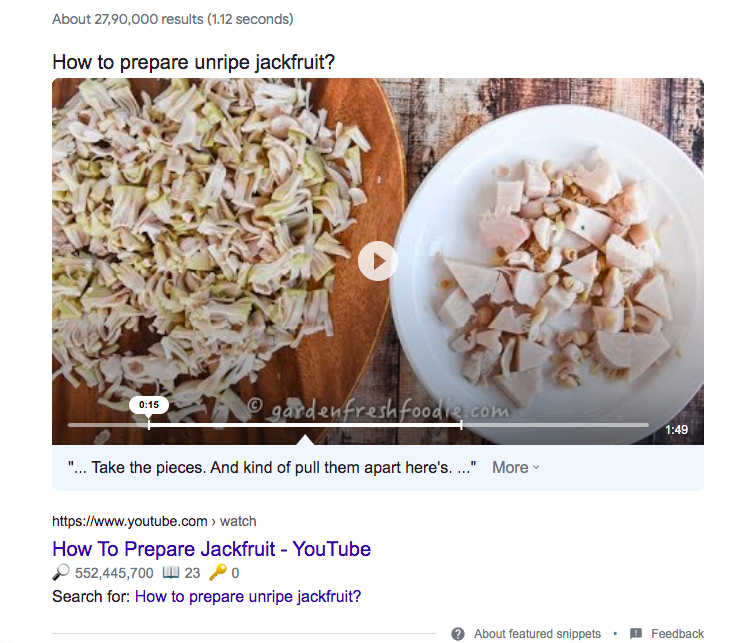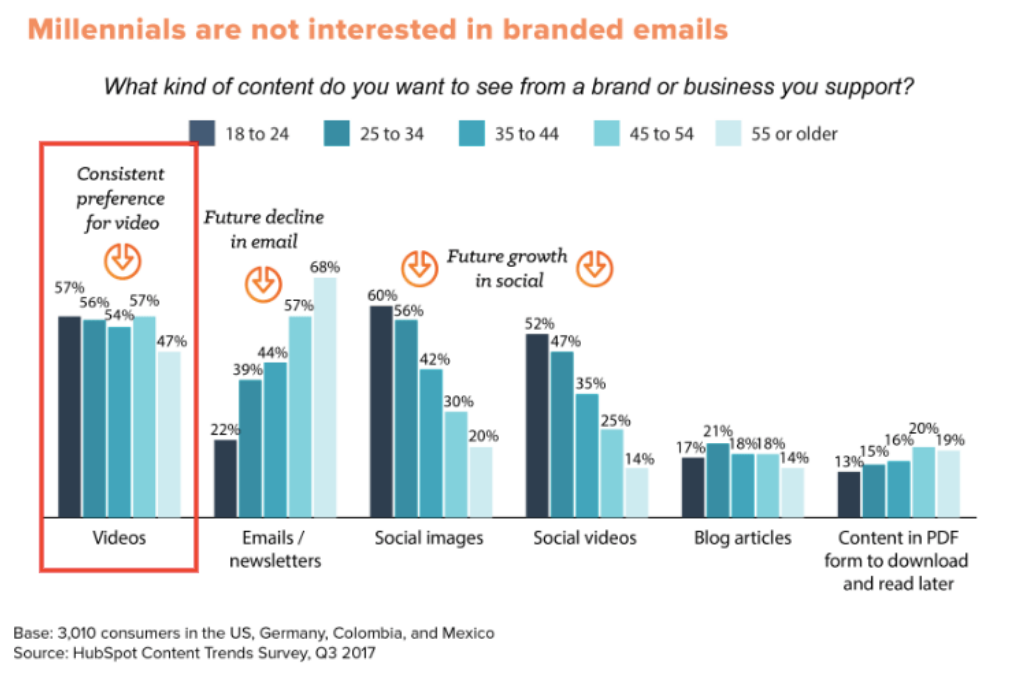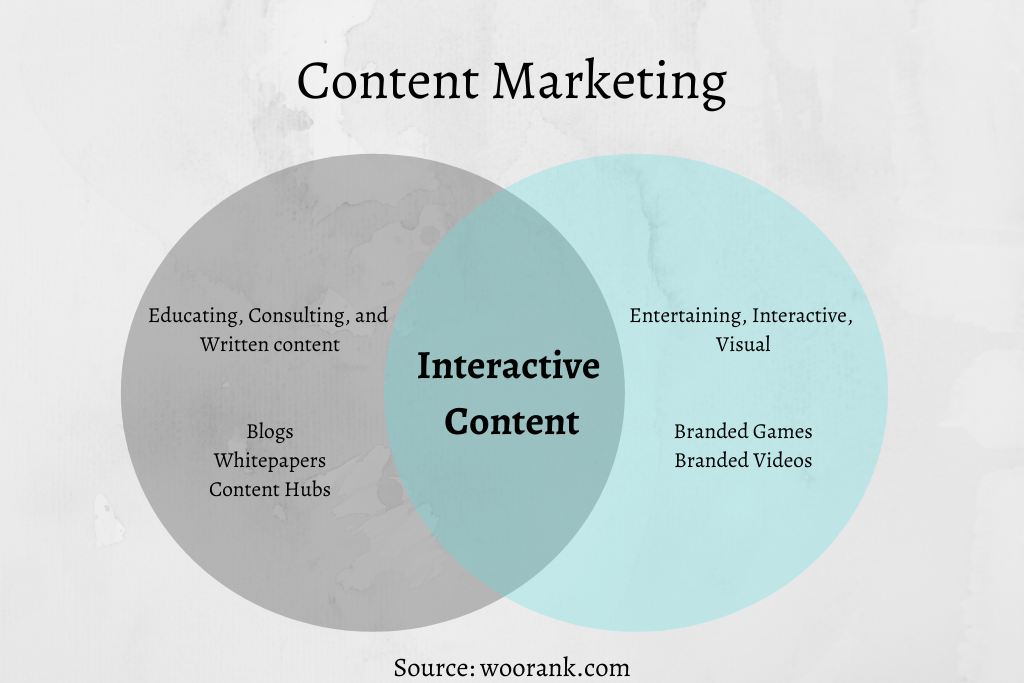
Top 10 content marketing trends that will rule 2021
Content marketing islike a trending buzzword, and companies areadopting it for market experience and experiments. Todaycontent marketing part of the digital marketing worldhas become a necessity for a brand’s growth and became an important brand marketing strategy. It has proven maximised ROI. It is evolving and added a variety of channels and analytical tools to test and prove its worth and work. Buffer, the popular social media brand, used guest blogging to increase its growth initially. For desired growth publishedcontent multiple times a day on high performing websites. Through this strategy, the buffer attracted 100,000 users in the first go.
In this blog, I will explain to you the biggest content marketing trends of 2021 that will rule the market. So it’s time to gear up and focus on next year’s challenges.
10 top content marketing trends 2021
Adaptability and flexibility have been central to content marketing. Many preferred marketing methods remain the same, but still, we need to keep ourselves updated with new trends.
- Building communities
You need to find a way to get noticed among 24 million e-commerce stores out there. You can achieve a presencein such a competitive space by developing a community. The community market isn’t all about quick sales but is all about engaging with customers and building loyalty and reaching a wider audience. Dollar Shave Club (DSC) is a perfect example of it and works on a subscription basis and considers all of its members as a part of the community.
In addition to social media presence and blog engagement with customers, DSC feature members in its subscription ensure its subscribers are at the heart of the business.
There is also one ProBlogger.
ProBlogger might be known for its jobboard or its blog but it also have a community side and which is a considered an essentialpart of the brand. The community gives established and new bloggers a chance to learn and collaborate.
It offers the following things:
- Networking opportunities
- Webinars
- Community downloads
- Discounted books
- Long-tail keywords and optimizing content
For a long time, the focus of marketers are on long-form content. But in recent times content marketing has stepped back from lengthy, detailed and boring article guides. Instead, the use of niche, long-tail keywords is prevalent as long-tail keywords are specific and have less competition.
Long-tail keywords help in fast content ranking on Google. Which results in more organic traffic and this is good news for marketers targeting a competitive niche.
Finding such keywords is not very difficult. We can find plenty of free and paid tools available to do keywords research.
- Semrush
- Ubersuggest
- Moz.com
- Wordtracker
Along with the above tools you can also use the following tricks
- You can use “people also searched for” Google feature
- Google suggest
- Google related search
Once narrowing down keywords, you can focus on a specific segment of your business and create content.
- Repurposing content across channels
Repurposing works multi-way. It can save time, bring in front of an audience and enhance organic search.
So in short we can say repackaging it in different format.
Example
- Turing blog post into Ebook or newsletter
- Embedding YouTube video in a blog
- Transcribing YouTube videos and distributing them as podcast, newsletter and blog content.
- Creating infographics from stats and research
ESPN showed how effective content repurposing is when it launched “We the Fans”. In this it distributed content across a range of formats, ie; podcasts, articles, videos and social media all were part of ESPN content strategy.
You should try doing the same for your business.
- Google discover feature
‘Google Discover’- well Yoast, Search engine land, and HubSpot are among those who are talking about the new features. Formerly it was known as “Google Feed” but now it has undergone a significant change since its launch.
Well, Google Discover combines news, evergreen content along with visuals like photos. Google uses AI to fill the feed and machine learning to understand the user’s search history, meaning the viewer gets engaging content.
You can find discover on Google’s mobile pages and mobile chrome users will see the feed when they once open a tab.
With time, Discover became more sophisticated. Your content is eligible to appear on Discover if it meets the guidelines and if Google has indexed it. However, Google does not guarantee that your content will appear in its Discover feed. Just ask this from Vogue and Vice’s publishers.
Google have guidelines to improve your content and the chances of your content to show up.
This include following
- Posting outstanding and engaging content
- Creating unique and timely content
- Providing authorship details
- High-quality image
- Descriptive titles
- Avoid clickbait
- Story feature
Stories are growing, and there are several reasons behind them. They make great social media content and show up in mobile searches and google images and increase chances of discoverability.
The other factor in their growing popularity are platforms like Google stories which create stories accessible to everyone.
Google web stories cater to consumer’s business lifestyles and provide content to people on the go. The use of Accelerated Mobile Page (AMP) allows readers to flick through the same way like social media stories.
Another example of a story feature is Instagram guides. It provides curated content in the form of videos, photos and text. The idea behind this is to make content easier to find and make brands and influencers easy to discover.
- NLG and generative media
Generative media is improving the same as natural language generation (NLG). Generative media uses AI to create content and the only difference is it creates computer-generated images instead of text.
It works exactly like NLP
- The designer gives instruction to the machine, detailing parameters and algorithms
- The machine uses these parameters to create an image.
To produce the finished piece, the designer can add some input and alter algorithms. Tyler Lastovich of Lastly studio predicted growth in generative media lately. There is still a surge in use and we have yet to see its full potential. For example, a content marketer can use it in areas like:
- Contextual images
- Personalized content
- Realistic chatbots
According to a senior analyst, the trial version of generative design and cloud-based generation and rising integration of 3D printing with generative designs are few reasons behind the content marketing trend.
- Super focused search results
Google’s EAT & BERT update is shifting the searches to more focused queries. With the inclusion of Google Rankbrain, Google can handle almost any query easily and show super relevant results. So what does it mean for us marketers? This makes content marketers put more effort in content marketing strategy.
Let’s understand it with an example
Some days ago I searched “how to cook jackfruit easy steps” and here is the result I got from the long phased query:
</span >

In my case, I got a 15-second video that Google scrapped from a video
What I am trying to say is:
Google is now extracting useful information from a piece of content and then displaying it in the snippet section.
So try to cover every single detail about your topic. It will help you in appearing in featured snippets if your content fits the query or is relevant.
- Content personalization is king
Yieldify defines content personalization as the “process of tailoring content” which a customer can see based on profile or preference.
The easy customer stands at a different stage of the customer journey. Your content should cater to specific needs and encourage customers to take the next step.
An outstanding example will be a customer who comes to your website to find more information, say kitchen goods. When they return to your site, you can offer them E-book offering tips and tricks for their home or a checklist on preparing for the revamp.
Content-driven personalization isn’t optional if customer satisfaction is your top priority. Research from Salesforce shows 84% of consumers say being treated like a person then a number is a crucial win for the business.
- Understand audience demand
For all content marketers, the major key in 2021 is understanding customer/audience demand. A recent study by HubSpot shows that over 57% of millennials enjoy and love watching videos.

Adopt an omnichannel to meet the needs of the audience and stay aware of needs.

Let’s learn the reason
Understanding audiences helps in publishing content that they want to see and once marketers start working on it they will witness increased traffic and conversions. If you are not sure about the audience interest, then here are some tips that you can try.
- Ask the audience directly or conduct a survey
- Scrape Google trends for trending topics
- Use Buzzsumo for social media analysis
- Voice search is here
Voice search is not new, it is already hype!
Let’s take a look at stats (Backlinko):
- Over 41% of adults and 55% of teens use voice search daily
- Over 20% of queries in mobile search are done through voice
- In 2021, more than 50% of searches will be done through built-in assistants or with devices like- Google Home & Alexa.
So start optimizing and switch to voice search resolution.
Conclusion
Trends aren’t everything, it is just data support that lists trends. You should work on complete research to check and analyse how to improve content marketing strategy.
There is also enough historical data that shows how quickly trends flop and die off.
So always keep yourself updated and stay in the market in close touch with the audience. Keep an eye on top performers and use data and experiments to fuel your strategy to head in 2021 and beyond.
Let us know which trends are you working on in 2021 and how you are incorporating them into your strategy?